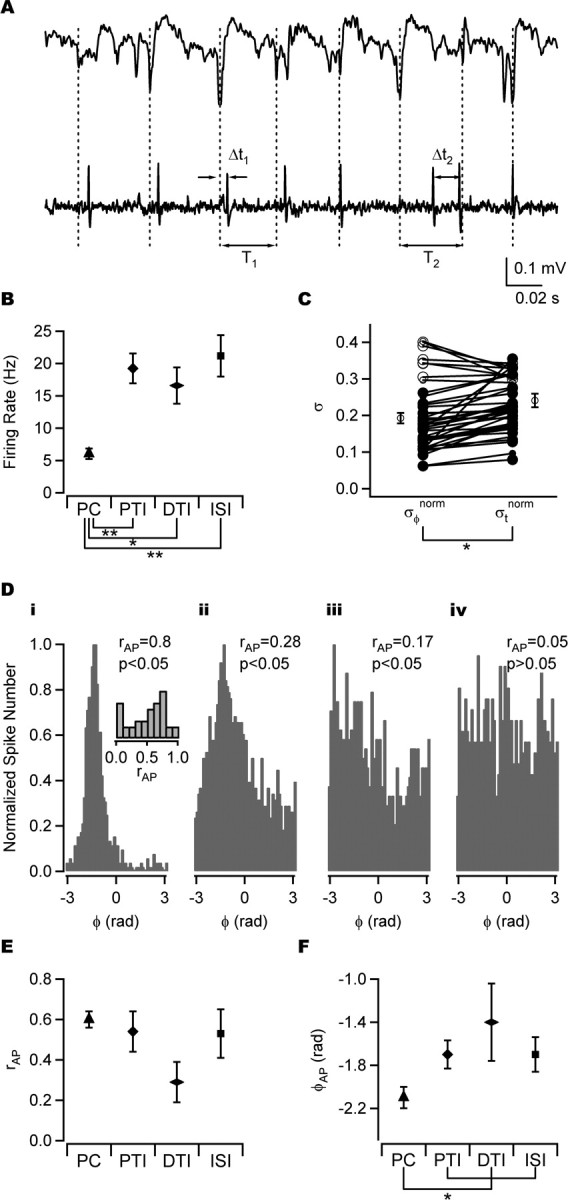Figure 4.

Firing properties of distinct types of neuron during CCh-induced oscillations. A, Simultaneous extracellular recordings of field potential (top trace) and spike train (bottom trace) from an anatomically identified perisomatic-targeting interneuron. ΔTi, Relative spike times used for time analysis of precision; Ti, cycle periods used for time analysis of precision (see Materials and Methods). B, Firing rate in different cell classes. PCs (n = 17) fired at significantly lower rates than perisomatic-targeting interneurons (n = 10), interneuron-selective interneurons (n = 8), and dendritic-targeting interneurons (n = 7). C, Comparison of phase and time precision as quantified by the SD of phase normalized by 2π (σφnorm) and SD of time relative to oscillation minimum normalized by the mean oscillation period (σtnorm). σφnorm was significantly smaller than σtnorm. D, Spike-phase histograms normalized by the maximum bin count of strongly phase-coupled cells (i, ii), weakly phase-coupled cell (iii), and non-phase-coupled cell (iv). Inset, Histogram of action potential phase-coupling strength (rAP) over all cells showing a bimodal distribution with minimum around rAP = 0.2, the cutoff value between strong and weak phase coupling. E, Average rAP in different cell types. The number of cells is as in B. F, Firing phase (φAP) of strongly phase-coupled cells in different cell types. PCs fired significantly earlier than all classes of interneurons. PCs, n = 17; perisomatic-targeting interneurons, n = 8; dendritic-targeting interneurons, n = 3; interneuron-selective interneurons, n = 6. Error bars indicate SEM. *p < 0.05; **p < 0.01. PTI, Perisomatic-targeting interneuron; DTI, dendritic-targeting interneuron; ISI, interneuron-selective interneuron.
